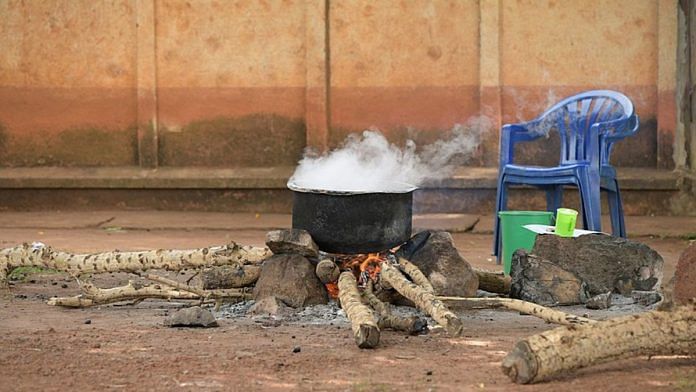As air quality makes the headlines again in Delhi and other major cities in North India, one should remember that air pollution is not limited to cities alone. It is a pan-India issue that also needs to be tackled beyond city borders.
In 2021, the Council on Energy, Environment and Water examined what is polluting India’s air. We found that household and industrial emissions account for over two-thirds of the total PM2.5 emissions nationally. This includes rural households that mostly use firewood, cattle dung cake, and crop residue for cooking. A major share of industrial pollution originates in small and medium enterprises (SMEs) which are often clustered on the outskirts of cities. However, the current National Clean Air Programme (NCAP) funding is directed only to urban local bodies (ULBs), which have no jurisdiction over these rural households and industry clusters.
Further, two-thirds of the NCAP funding has been utilised only for road dust mitigation within city boundaries. This disconnect between the major sources of pollution and where the money to combat it is being utilised needs to be addressed.
Here, the Swachh Bharat Mission offers a valuable parallel. The campaign distinguishes between rural and urban programmes. Its Grameen section primarily focuses on open defecation-free (ODF) rural regions, while its Urban section focuses on scientifically managing municipal solid waste. Similarly, a greater emphasis on pollution sources outside city boundaries could make the second phase of the NCAP more inclusive and impactful.
Rural household emissions
Household emissions from burning solid fuels in rural households contribute 27 to 50 per cent of PM2.5 emissions in India. According to the 2020 India Residential Energy Survey, even after improved access to LPG, about 38 per cent of Indian homes (mainly rural) use both LPG and solid fuels.
For many rural households, firewood and biomass are freely available, making LPG seem like a poor use of limited cash better spent on essentials such as health and education.
Notably, a family of five typically requires eight cylinders annually with Pradhan Mantri Ujjwala Yojana (PMUY), with non-PMUY households in rural India paying about Rs 500 to Rs 800 per cylinder. To address this, a discounted cylinder price could be considered in the run-up to and during high pollution episodes, such as in winter in the affected areas
The transition from unsustainably harvested firewood to LPG also has net climate gains. The government should also explore carbon credits for LPG to keep prices low around the year without extra fiscal strain.
Also read: A Sanskrit Bible story was written in Ayodhya. The patron was a Lodi, the poet a Kshatriya
Green energy transition for SMEs
Industries contribute 21 to 38 per cent of PM2.5 emissions, highlighting the need for a green energy transition, particularly for SMEs located outside city borders. For instance, in the case of Delhi, industries are located in nearby districts like Bhiwadi or Manesar. These industries often rely on coal and wood for their operations.
To promote alternative fuels and energy efficiency, India recently announced a subsidy of Rs 15,000 crore to help micro, small, and medium enterprises (MSMEs) adopt green technologies. China has successfully implemented such a transition in the Beijing-Tianjin-Hebei region. The Chinese government, with additional support from multilateral banks, incentivised industries to move from coal to gas by establishing an extensive gas pipeline network.
Back in India, the government’s 5 crore enterprise registrations strong Udyam portal can play an important role in tracking the efficiency of this transition. The data from the portal can be used for multiple purposes, including credit ratings, efficiency metrics in processes, emissions reporting, knowledge sharing, and building capacity for SMEs.
Also read: Trump’s call to buy Greenland isn’t crazy. Makes perfect strategic sense
Air quality monitoring beyond cities
There is also a need to expand air quality monitoring beyond city limits. In the past five years, the number of continuous ambient air quality monitoring stations (CAAQMS) in India has more than tripled, from 165 in 2019 to 559 in October 2024. However, most of the deployment has been concentrated in urban centres, leaving rural areas sparsely monitored.
Additionally, based on the Central Pollution Control Board’s population-based monitoring requirements, there is a need for 1,200 CAAQMS in rural areas. Alongside this expansion, India should also integrate satellite and drone monitoring, mobile vans, and Internet of Things sensor networks into its air quality efforts to build a robust, hybrid monitoring system. This multifaceted approach would enhance the spatial and temporal resolution of air quality data, enabling better monitoring and management efforts at the national level.
Clean air is intrinsically linked with quality of life and is a right for all Indians, not just urban dwellers. It is imperative that the current clean air programmes expand their scope beyond urban India.
Adeel Khan is a Programme Associate and Abhishek Kar is a Senior Programme Lead at the Council on Energy, Environment and Water (CEEW), an independent not-for-profit policy research institution. Views are personal.
(Edited by Prasanna Bachchhav)






